
Eispiade
So, what I figured this planet would be like, 92% of the surface is covered in water, and there are no ice caps, the temperature is very hot and the ozone very thick in most places. There is a much higher oxygen level than on earth and a much higher radiation level, caused by the planet's previous inhabitants. The planet has four moons and orbits a larger giant gas planet itself, and it's own sun is twice the size of Earth's.
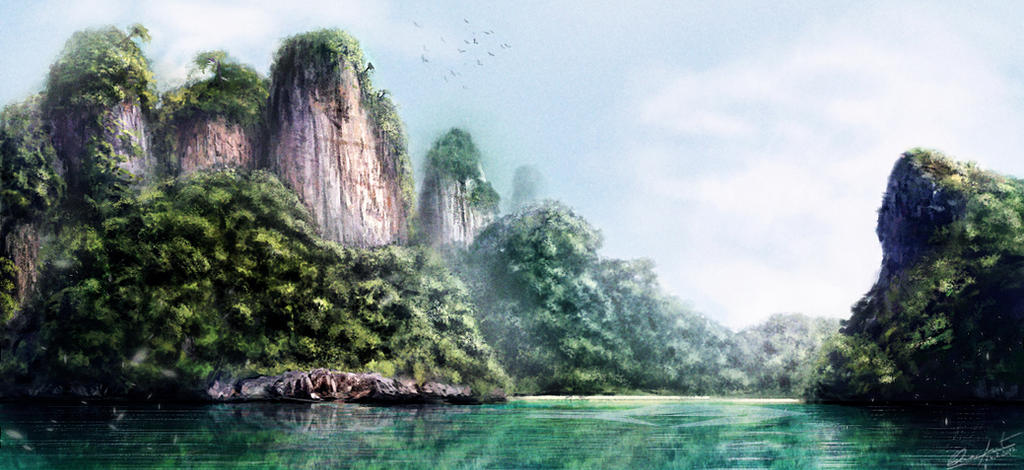
This is pretty much what most of the landmass is like. Very high up, very rocky, with lots of volcanic activity both on the land and under the ocean. Steep cliffs are cut through with vast rivers and waterfalls, and the climate is very hot and humid. There are three seasons, Rainy, Dry, and Fire. The rainy and dry seasons alternate, and the coastal plains dry up and become deserts, then become lush and fruitful with the seasonal rains. Every ten-five years or so there are a series of earthquakes, volcanic eruptions, devastating firestorms, and tsunamis, caused by unusual tectonic activity beneath the subcontinents.
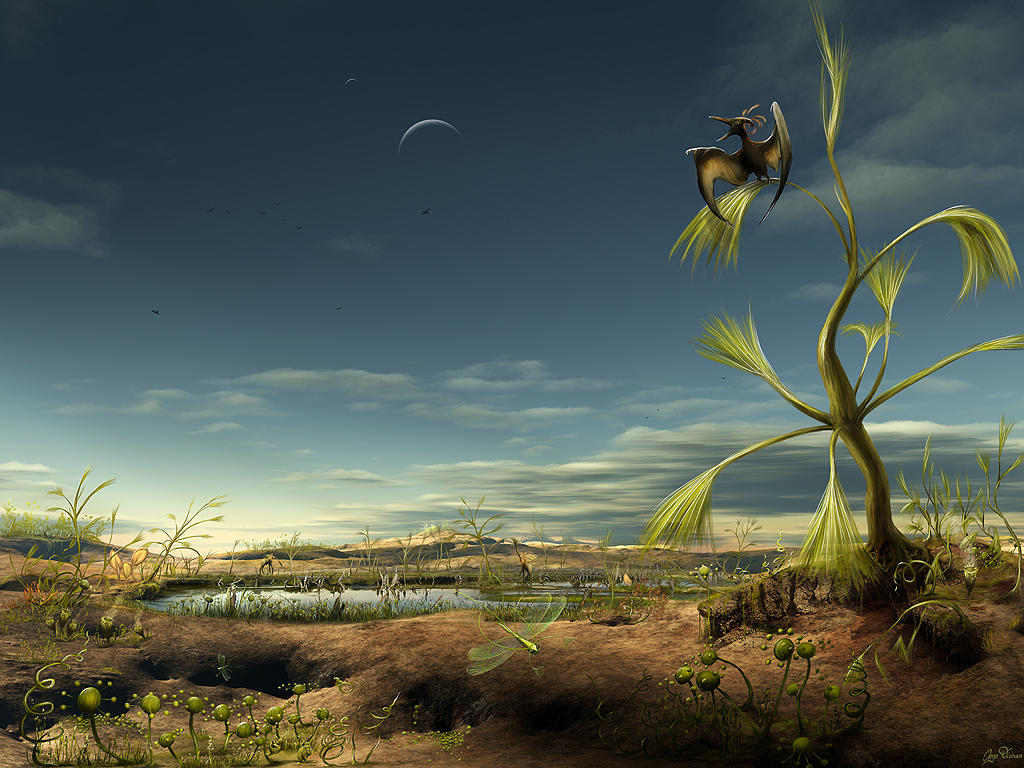
The seasonal plains. Despite the harsh and unforgiving life many creatures have here, with temperatures reaching up to 120 degrees farenheit in the daytime, many large animals make this place their home. Several native peoples live here as well, staying in nomadic encampments and digging deep underground shelters to keep cool, thus finding many rare gems and metals for trade. Due to this advantage, they have large cities and trading centers, sometimes with up to 80,000 people in a single tribe. However, because of their wealth and relative lack of environmental protection, they were easy prey for the space pirates, and are now an endangered culture.
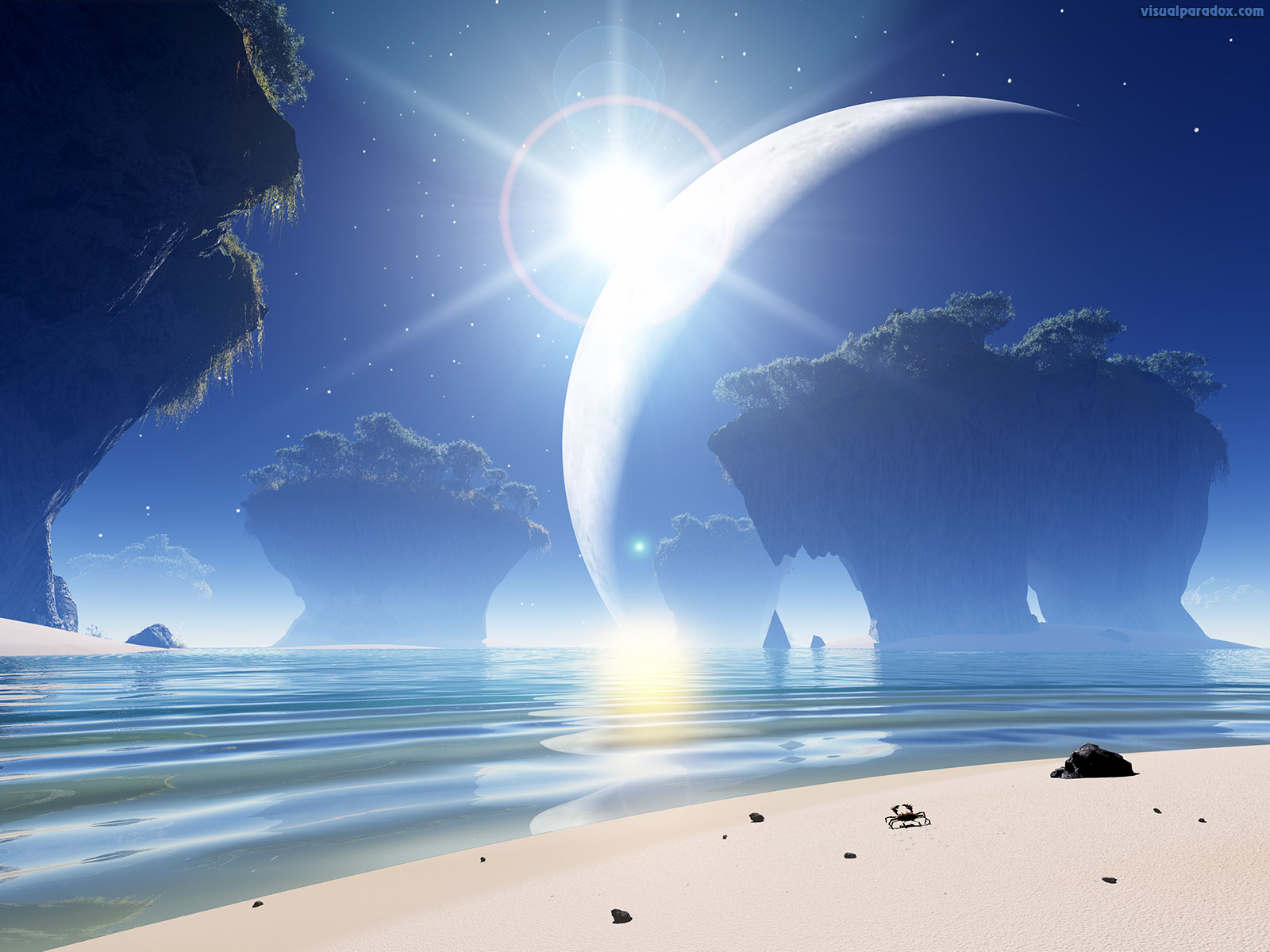
The coastal area of the planets are largely uninhabited and avoided by the locals year-round. This is due to the fact that they serve as breeding ground for the large predatory sea creatures that lurk beneath the waves. Tsunamis are also a constant danger, and occasionally wash up the monsters into fresh water streams, where they wreak havoc before succumbing to starvation or illness. Those who manage to slay one of these monsters are revered as blessed people, and treated with high respect. Even those who simply manage to survive the ocean creatures gain a great standing in society, yet despite this, it is still frowned upon to journey to the beaches.

The village. This village lies deep in the jungle, and is a rather modest settlement, holding only 2,000 inhabitants at any time. The people rely on fishing, hunting, and primitive agriculture to survive, leading this to become one of the few remaining permanent settlements on the planet. Its waterfalls have eroded cliffs full of precious stone, so much so that at a certain pool, the very sand is rainbow-colored. They sit comfortably secure, protected by the thick and treacherous jungle surrounding them, having adapted to their environment over a period of tens of thousands of years.
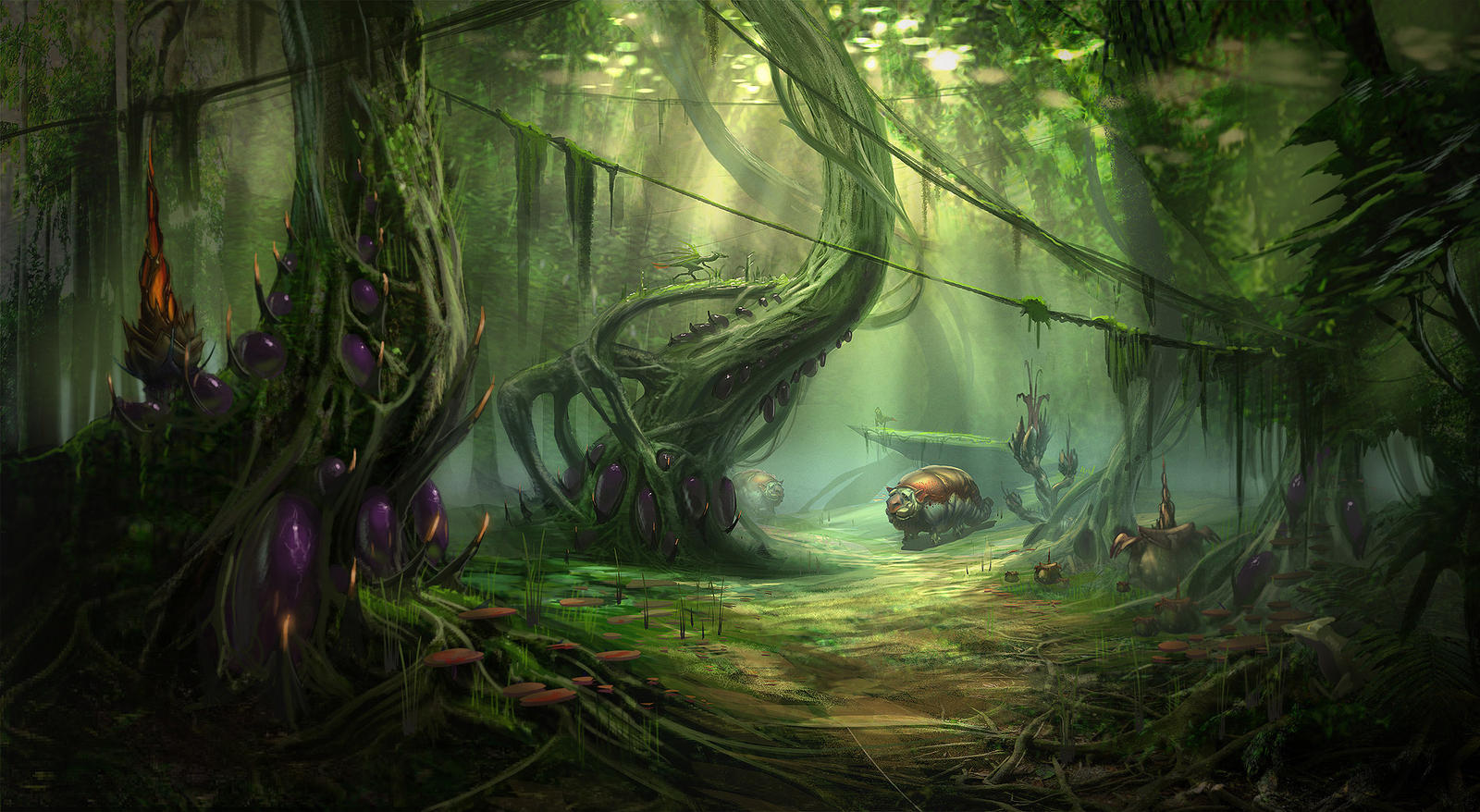
The deep jungles, full of plants, animals, and fungi all with one purpose; to kill you. Really, they will. And most will eat you afterwards. The only way to safely get through the jungle is with a bunch of well-armed guides, or a megabulldozer on a warpath. Guess which one the Pirates have?

The pirate ship. Big, ugly, and horrifically effective. A fast cargo cruiser converted to a war ship, it's slow and clumsy, not really a proper ship for space battles. But it carries ships that are, modern helicopters, fighter jets, armored vehicles, and a megabulldozer. Cause, why the fuck not? They used to make their living bullying the poor people on the outer planets until law enforcement chased them off and forced them to go into the neighboring Andromeda galaxy. There, they found the planet Eispiade, and upon finding it habitable, decided to go all Christopher Columbus on it and build their own, space-piratey civilization there. At the natives expense.
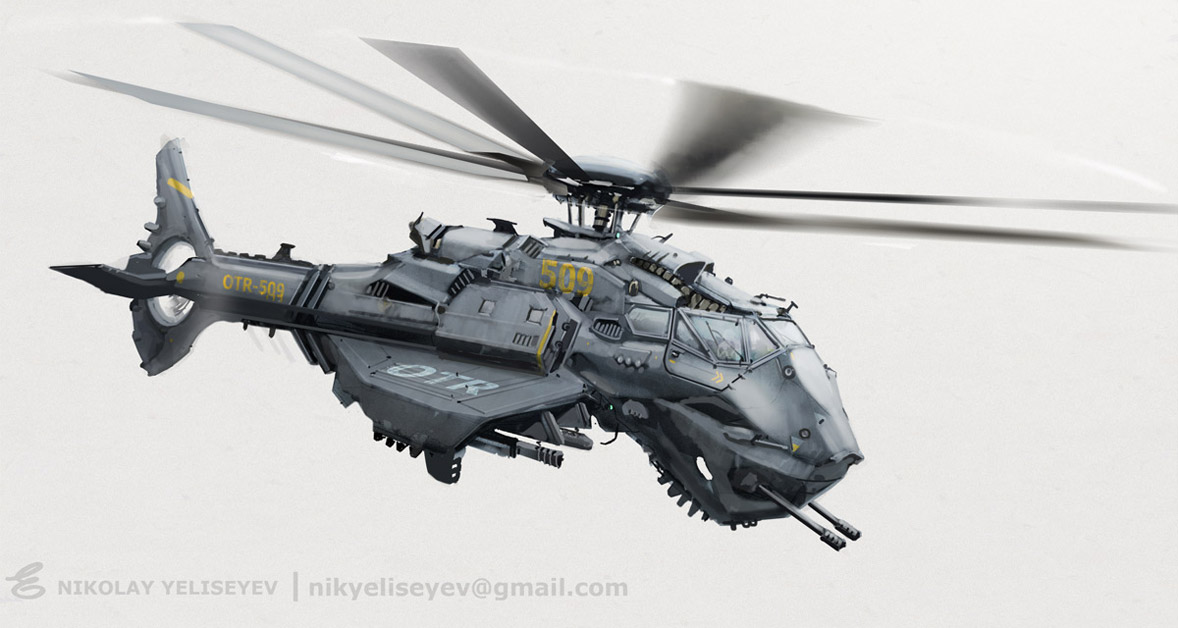
A helicopter. Equipped with fragmentary artillery rounds and flamethrowers. Just in case the bullets miss.

The forbidden city, a hidden lost civilization from the planet's previous inhabitants. A dangerous and eerie place, shunned and forgotten by the natives, it is a lifeless place, only accessible through an underwater passage. The sheer size of the city and it's mysterious glow inspire tales of gods who resided there, but the presence of hostile animals prevents exploration. The lost technology in the ruins far exceeds the capabilities of humans, but the lack of any inhabitants and the fact that the city is still perfectly intact prompts the question- Where did it's people go?
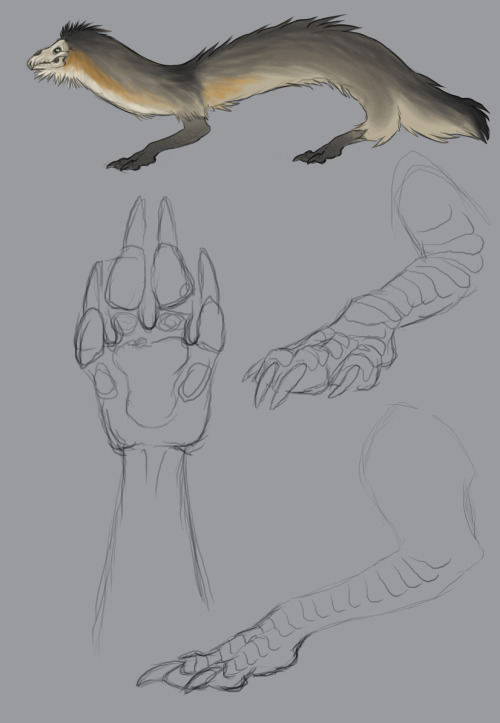
Hell Skink, or Uakari
Size: 2 meters
A dog-like domesticated animal, these creatures are both fantastic climbers and hunters. They use their long, narrow bodies to squeeze into small places after prey, and can jump high enough to snap flying animals as well. The bony helmet on their face is actually made of keratin, to protect their delicate nose and eyes. They have a superb sense of smell and excellent night vision, sleeping in the day and hunting in the evening and early morning. They are superbly loyal, forming familial bonds that last through generations. A differing subspecies lives on the plains, their long claws becoming more spade-like to dig spiral burrows and nests.
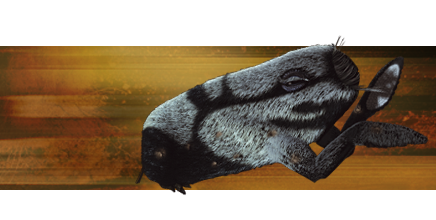
Striped Moorhen, or Khakinwi
Size: 1/2 meter long
A species of subterranean bird, they live in colonies underground and taste like chicken. They are easily hunted by Hell Skinks and are a staple food for the people of the plains. They lay eggs and bury them halfway in soft dirt, taking turns incubating them until they hatch. The young are born blind and age quickly, becoming sexually viable four months after hatching. They do not form mating pairs, and regularly switch partners. One clutch of eggs may have as many as ten different fathers, ensuring DNA diversity and preventing inbreeding. They feed mostly on insects and plant roots, getting all the water they need from their food.
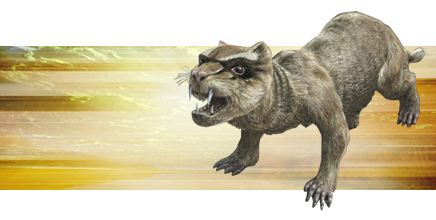
Fuzzy Weaver, or Oremo
A jungle-residing mammal-like animal, they are an herbivorous species, despite their sharp tusks and claws. Feasting mostly on fallen fruits and tubers, they are the size of raccoons and highly aggressive. They form lifelong pairs and leave their young early, having 3-5 kits typically twice a year. They have venomous glands near their hind legs, and will spray predators with the stinging liquid, causing skin irritation and sweeping. Because of their annoying nature and the fact that they damage crops, the people of the jungle find them a nuisance. Their meat is very tough and wiry, but easily preserved and highly nutritious, and their pelts make fine clothes. Beneath their fur is skin of soft scales, showing that they are of reptilian ancestry.
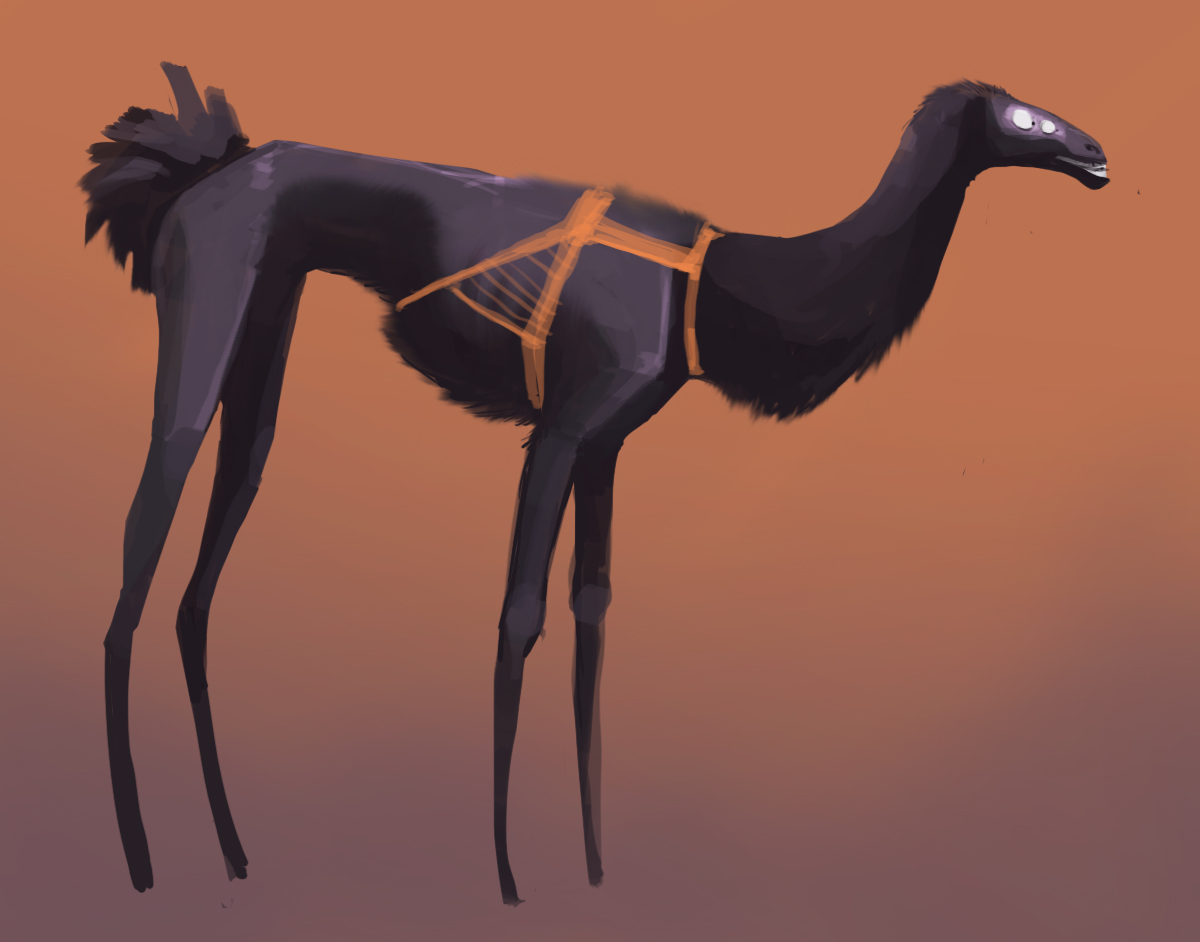
Glimmer Camel or Caxeri
Size: Seven feet tall
An animal that transitions easily between the plains and jungle, they gain their human name from the bioluminescent parasites that live in their fur, and their four eyes, which reflect light. Naturally nocturnal, the domesticated animals must be blindfolded in the day to protect their delicate eyes, and well groomed, as the parasite causes the animal some discomfort when left untreated. To soothe their itchy skin, they bathe frequently in water and dust, and groom one another using their long tongues. They feed mostly on insects and soft, high growing vegetation. They retreat into the jungle when the dry season comes.

Monkey Frog, or Xraccop
These chimpanzee-sized animals spend their lives high in the trees, some living their entire lives without touching the ground. They are gentle and docile creatures, similar to bonobos, and solve their problems with grooming and mating. The are matrimonial, females making up the majority of the group, males being nomadic and typically solitary. The clans are led by one lead female, typically the eldest, who stands guard over the group, and always mates first with males. Females collectively adore and raise their young, to the point that new mothers sometimes become paranoid, and will eat their young rather than suffer the stress of being the center of attention. This fear typically fades away with age, and the older females will give their young away when they become too old to care for them. They are omnivorous and opportunistic.

Many birds inhabit the jungle, the most common and prominent being, by their human names, the Warty Crow, the Waddling Knifefeather, the Horned Crane, the Baba Hen, the Spider Jay, the Blue Turkey, the Jelly-back Crane, the Greater Beaked Vulture, the Grinning Brown Bird, and the Dew Loon, in that order.
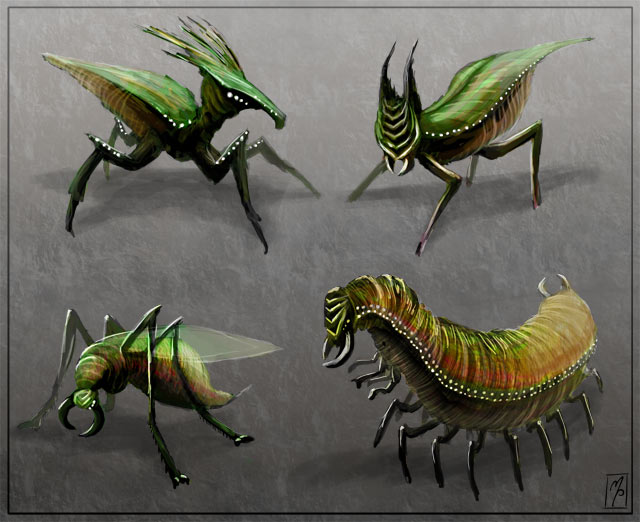
Several assorted insects also inhabit Eispiade, growing to unusually large sizes. Most are around the size of your hand, but the true giants are the Conebacked Sprinter, standing at four feet tall, the Giant Leafback, standing one meter tall and three meters long, the Wasp Hawk, with a wingspan of eight feet, and the Empress Centipede, a thankfully herbivorous monster the size of a school bus.
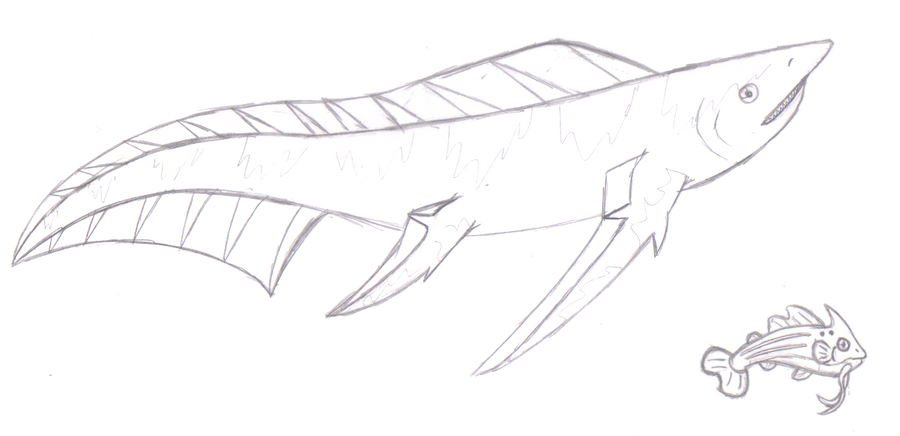
The two most common fish on Eispiade are the Shy Shark, and the Lesser Whiskerfish, both of whom are edible and very delicious. They eat constantly, but are toxic to each other, which explains why there are so many of them and so few of any other.

Tusked Fish-Lion, or Poethu
Weighing over a ton, this heavyweight dominates the beaches and shallow waters, violently battling over prime territory and mates, and the best hunting grounds. They can use their powerful front flippers to move on land, but are slow and clumsy. Males are twice the size of females and have larger tusks. Females spend most of their lives in the open ocean, where they bear and raise their young, as males are highly aggressive and will trample the young, perceiving them as a threat. However, despite their violent natures and fearsome appearance, they are not even close to being an apex predator.

Pool Basilisk, or Tyhell
This monster lives in shallow water, near reefs and lagoons. They are poor swimmers, and walk along the ocean floor, using their long snouts to dig up shellfish. They breath air, constantly having to resurface, which is why they stay in the shallows. They have poor vision, despite their large eyes, but excellent hearing, being able to detect the slightest motion in the water. They are fairly docile, only becoming aggressive during mating season, when they gather in large numbers. At the end of each of their legs is a hook filled with a highly potent toxin, used to defend themselves against enemies, like the Tusked Fish-Lion.
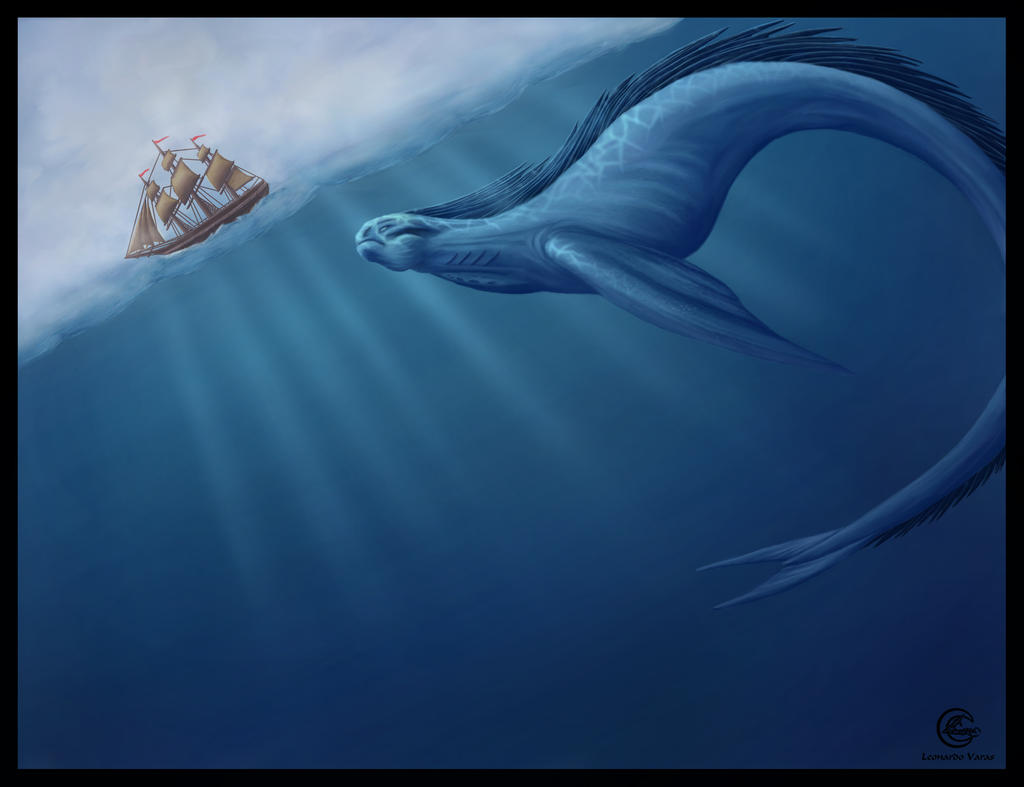
Ninobo
A colossal creature twice the size of the blue whale, they are almost completely unknown to the natives, and completely unknown to humans. They spend their lives in the open ocean, in constant search of food for their massive body. Curious creatures, there is nothing that can possibly take on a fully grown adult, and so they have no fear. They are known to "sing" when they come near shore, though the reason why is unknown.

Skeleton Shrimp, or Unspeakable Ones
These nighttime hunters are the reason why the native aliens fear the oceans so much. They are not particularly fast or strong, but they utilize one of the most terrible traits in the animal kingdom: pursuit predation. Once these monsters have the scent of prey, they follow it relentlessly, drawing in others of its kind as they track it. With their primitive lungs and tough exoskeleton, they are even able to climb up onto land to stalk the unfortunate creature. Entire villages have been massacred when a sudden tsunami washes one of them ashore. They are not know to ever die of old age, and can go for undetermined periods of time without any nourishment. The rumor of an Unspeakable one can put villages into a terrorized panic, waiting inside their homes for the monster to eventually find them. It is unknown how they breed, but males seem to be of a larger size than females, though both utilize their terrible skill.

Urure
These flying creatures inhabit the Forbidden City, preventing anyone from coming near. They prey on anything, cannibalizing their weak and old, and emit a unearthly shriek when excited. However, they are dimwitted, unable to recognize their own reflection, and will attack it, should they ever see it. They also burn, curiously, in the sunlight, and it is thought that their skin is too soft and fragile to cope with the harsh light.




People just call it a "Stomper" because of it's huge feet. It mostly eats creatures that are smaller than itself, along with some vegetation to help along it's digest. It is half the size of an Earth elephant. It lives anywhere there are forests, trees, or places it can hide, though it can adapt rather easily if it is brought somewhere as a young cub. It is used as a transportation animal if raised from a cub.In the wild, it is not aggressive, unless it's nesting spot is approached, or unless it is hungry. It's generally a lazy creature in nature, but can be quite fearsome if messed with. -- Credit to Ayesha
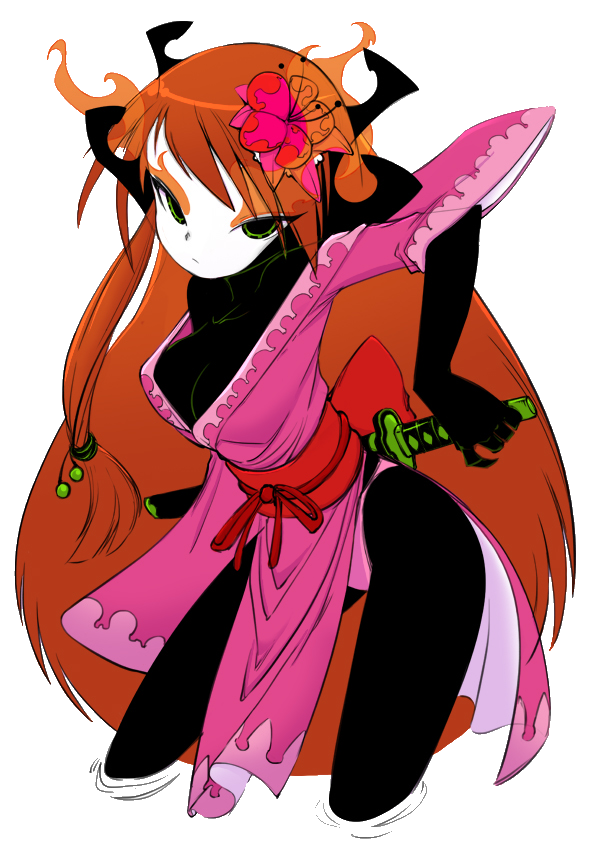
The Eiasian
Appearance:
The Eiasian are a slight and wiry people, their skin is pitch black but their faces white. They have four bony horns sprouting from the sides of their heads, and long black tails. They paint their white faces as a form of showing status and as a sign of beauty. They are swift and strong, having adapted to their environment tens of thousands of years before. They have claws, and four mammary glands, though the lower two are flat and useless. They are born without external genitalia, and so are treated as genderless until they reach adolescence. There is no sexual dimorphism in the species.
Society: The Eiasian are odd in that they are matrilineal, but patrimonial. They are led by a chief and his three advisors, and while a woman can be an advisor, she cannot be a chief. Only the men go to war, traditionally, and their way of war is to have several bloody contests serving as battles. The finest warriors enter, and typically only the winner survives. The losing side must pay reparations to the winning, which depends on what the conflict was about. If it was over territory, than the losing side must give up the disputed land. If over a murder, they must give up a number of their young people to replace those killed. If thievery, they must pay back the worth of the stolen item, plus gifts of goodwill. They are polygamous, but usually only wealthy individuals have multiple spouses, and if mistreated or neglected, then the offended spouse has the right to leave and take their possessions with them. They trade by barter.
Religion: They do not have the concept of gods, instead worshiping elemental forces and animals. Women typically are the caretakers of shrines and holy places, and are the ones to perform ceremonial rights. The idea behind this is that since women are the givers of life, they are blessed and pure. Because of this, rape is almost unheard of, and is a grave offense punishable by exile. Women are also healers and care for the old and sick, and this too is tied to religion, particularly to fire. They have no written system, and so stories and rites are passed down by word of mouth and pictograms. They also do not believe in an afterlife, and so burn the bodies of their dead and scatter the ashes to feed new life.
Technology: The technology of the Eiasians is rather primitive, barely past 14th century earth. They have watermills and baths, lifts, pulleys, ships, and sophisticated housing. The only projectile weapons they have are slings, spears, blow darts, and arrows. The typical warrior is adorned with war paint, leather armor, and long metal knives. They build most of their houses out of wood, stone, and grass. Gold and gems are used as jewelry or decorations, and most clothing is made on the loom from the silk cocoons of insects. Bedding and blankets are typically from soft hides, and there is a heavy focus on bathing. Heated stones are pressed onto bodies to help relieve stress.
Mining is also a part of their life that is strangely modern. They use water to dislodge stones, have lifts pull stones out of the mine, and use metal tools to break rocks. The dampness of the mines prevents dust from accumulating and thus helps lungs, and the old mines are used as play spots as they are quiet and cool.
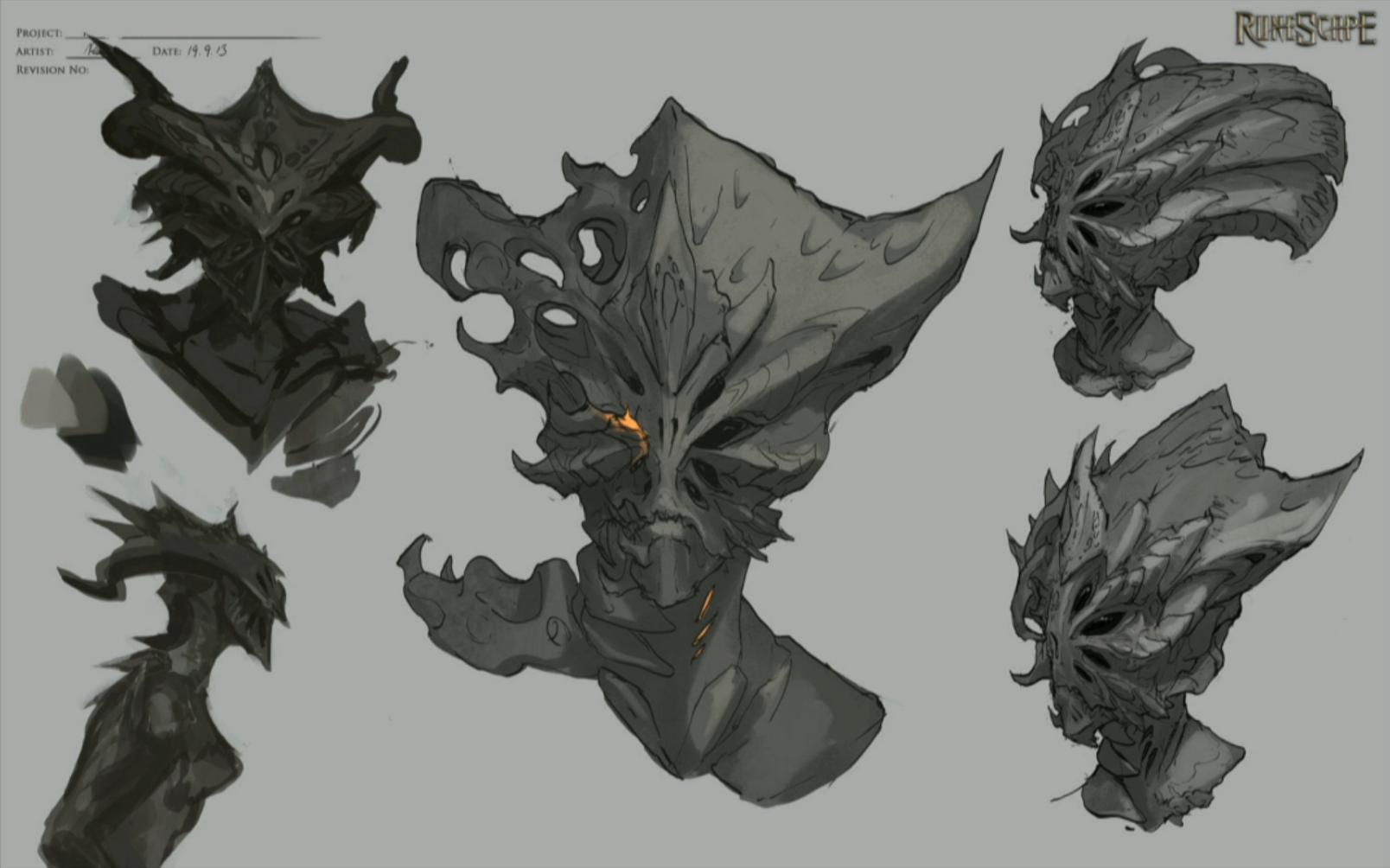
The Old Ones.
These guys inhabited the planet WAY long ago, before the Eiasian. They were technologically advanced, dominated the planet, and built the Forbidden City. There are some physical likeness between them and the Eiasians, but where did they go? What happened to make them disappear? And... Are there still some around, possibly somewhere deep within the Forbidden City?
